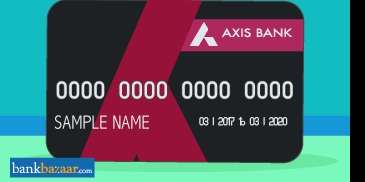

Add-on credit card basics
Additional credit cards are a feature rising in popularity, but to understand it better, we need take a look at what credit cards are and their importance today.

undefined
Credit cards dominate the economy and affiliated conversations in a big way today – the latter of which includes the very concept of spending. Credit cards have revolutionized the concept of finance in the biggest way since the invention of money itself. Ever since their introduction in the 1950s, credit cards have completely changed the way individuals use money for spends and purchases. These small plastic cards may seem unimportant, but the power they wield over the economy is quite significant.
A big part of the population owns and uses credit cards, and all major banks like SBI, HDFC, ICICI, Axis provide credit cards to customers because there are a number of benefits for both parties. Credit cards are extremely convenient, but this in turn makes them double-edged swords – if you don’t use them judiciously you might find yourself in a debt pretty soon. Know more about axis bank credit cards.
This is because credit cards are not available for free. Apart from the joining or annual fee that most cards impose, credit cards come with bills that need to be repaid every month. Unlike debit cards, credit cards provide funds on a credit. It is not from what the individual has already and hence needs to be repaid. In other words, credit cards are similar to loans that can be availed with the swipe of the credit card. And just like loans, these need to be repaid. Individuals can pay their credit card bill during the billing cycle and must ideally pay the full bill in one go. Doing other wise will result in the bill attracting interest. Another option is to pay just the minimum amount due. But this is again not advisable as interest rates will get added and although it might seem like a small amount in the beginning, it will add up resulting in the cardholder racking up a hefty bill which might be hard to pay later.
Therefore, in order to avail credit cards, there’s a bunch of criteria that is imposed by the credit card provider which is mainly, a stable income-source, credit score and age. You have to be 18 at least. There’s a vast majority of people who may not fulfil one or several of the above criteria – and this is where Add-on credit cards come in.
Additional credit cards, or add-on cards are issued under the primary credit card. These credit cards are also known as supplementary credit cards. Add-on credit card holders are mostly family members of the primary cardholder, including children. Based on the discretion and policy guidelines of a particular bank, the number of additional credit cards may go up to as many as five. The credit limit is usually the same as for the primary credit card – it is merely distributed equally among the additional cards issued. The primary cardholder is also responsible for the spending and payments made on the additional credit card, including any debts the card racks up. Additional credit card usage also has a direct impact on the primary card holders CIBIL score.
Used well and judiciously, additional credit cards come with a wide variety of benefits. Barring a few areas, additional card holders have the same freedom as the primary credit card holders while making purchases. Add-on cards are valid both in India and abroad (depending on the provider), and work for both online and offline transactions.
Additional credit cards also prove handy in racking up Reward Points and AirMiles, along with a host of other discounts. Every credit-card usage clocks up such points, which can later be redeemed for offers/gifts from the credit card provider’s Rewards Catalogue. Additional Credit Cards holders can avail this too, and more so – even help reaching the required spend levels. Which means if as a couple you have two cards going instead of one, you make twice the points in the same amount of time. The points are even transferable in additional credit cards issued by several banks.
Even as Additional Credit card holders are those who are either too young to be issued primary credit cards or are not eligible because of lack of a stable financial condition or a substantial-enough credit score, using Additional Credit Cards can make these users more aware, judicious and prudent about handling finances. Such knowledge goes a long way in long-term financial assessment and handling.
Rest assured that as primary card holder, you’re fully aware and constantly alerted about the activities on all your additional credit card, and this should let you make sure things never get out of hand with overspending. All transactions made on additional credit cards are recorded in the same statement as the primary card. While you remain responsible to pay the interests of the addAll your additional credit cards are issued on no additional costs at all.
Additional credit cards can also be used to withdraw cash from most ATM’s – with the daily limit being the same as that of the primary card.




.jpg?mode=crop&crop=faces&ar=1%3A1&format=auto&w=1920&q=75)
